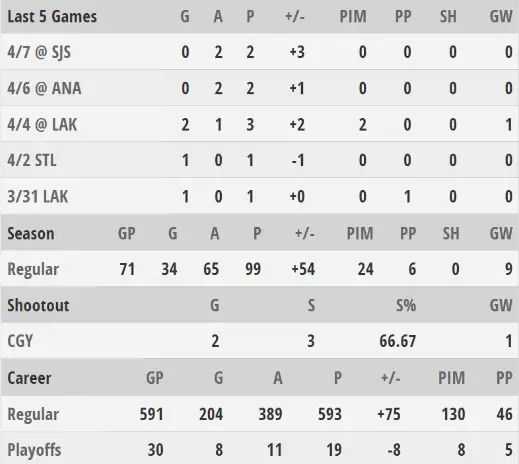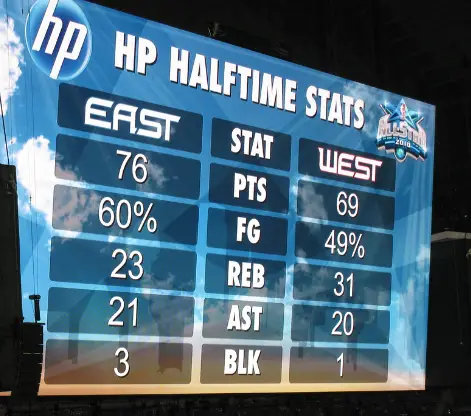Plus-minus is an important statistic used in basketball to measure a player’s impact on the team. It is calculated by subtracting the number of points scored by the opposing team while a certain player is on the court from the number of points scored by their team. Knowing how to calculate plus-minus accurately can help coaches and players gain insight into individual performance and strategy.
What Is A +/- In NBA?

The plus-minus statistic, also known as the +/- rating, is an important metric used to measure individual players’ performance in basketball games. It helps to evaluate how a team performs when certain players are on or off the court. The goal of the statistic is to indicate how effective each player is at helping his or her team score points and prevent their opponents from doing so. Considering several factors, such as boxscore statistics and advanced analytics data, the plus-minus statistic can help coaches make more informed decisions about which lineups work best for their teams.
When calculating plus-minus in basketball, all offensive and defensive events that occur while a certain player is on the court are considered. This includes field goals made/missed, rebounds collected, steals, and assists recorded by each player.
What Are The Good +/- Statistics For A Player In NBA?

Good NBA players typically have higher shooting percentages, more assists per game, fewer turnovers per game, and more points scored than those who are less successful on the court. They also tend to have higher rebound totals, steal values, and lower personal foul numbers than players with lesser skill sets.
On average, most players have zero or close to zero ratings for plus-minus, which means they perform at par with their opponents during each game.
Is +/- Stats Important?

Yes, In basketball, plus-minus is one of the most important stats which can determine how well an individual player or entire lineup is performing.
Who Has The Highest +/- Of All Time In The NBA?

Tim Duncan’s point total sits at an impressive 8910 points. The San Antonio Spurs big man was a 15-time All-Star and won five championships during his 19-year career. He is widely regarded as one of the best power forwards to play the game, and his point totals are a testament to that fact.
Right behind him on the all-time list is LeBron James, with 6981 points. The four-time MVP has had an incredible career since entering the league in 2003.
Best +/- In NBA In A Single Season:

The 1996-97 season of basketball was a special one for Michael Jordan. He achieved an 818 plus-minus rating, the highest ever recorded in NBA history. It’s an impressive accomplishment for him.
How Does +/- Evaluate Players?
Plus-minus measures the net difference between a team’s total points scored while that player was on the court and the points scored against them.
A positive plus-minus rating indicates that a team outscored its opponent while that particular player was playing; conversely, a negative rating suggests that their opponents had more success than them during this time. Plus-minus can be incredibly useful for coaches and scouts to assess areas of strength and weakness in individual players and teams.
It allows for comparisons between players performing similarly or with similar roles on the court—ultimately making it easier to determine which ones should receive more playing time or be given certain responsibilities.
How To Improve +/- In Basketball?
Practice The Fundamentals:
Practice the fundamentals of the game, such as dribbling and shooting. Start by finding an open court or area with a hoop to practice independently. Working on drills such as free throws and layups will help you build up your muscle memory so that your body will know how to react instinctively when the time comes in an actual game.
Focus On Building Your Strength And Agility:
This can be done by weight lifting, running drills, and other exercises designed to increase muscle power and speed. Additionally, practice proper nutrition by eating healthy foods like lean proteins and getting the recommended sleep each night.
Can Plus-Minus Be Misleading?
Absolutely. Statistics can paint a false depiction of the game and its players. The numbers don’t tell the whole story when assessing an individual’s performance on the court. Countless intangibles, such as leadership, determination, and grit, cannot be expressed through mere digits.
Furthermore, many advanced metrics are used to evaluate a player’s contributions, which may not accurately represent traditional box score statistics such as points per game or field goal percentage. Statistics should never be taken at face value when determining how much impact a certain player has on their team’s success.
Conclusion:
Plus-minus in basketball offers an insightful look at how individual players perform and impact the game. It is a statistic that rewards the players who impact both ends of the court, allowing them to stand out from their peers. Plus-minus can be used in various ways, including evaluating team strategies and scouting potential opponents. Plus-minus is a valuable tool for coaches, players, and fans alike as it helps to measure the overall effectiveness of a player’s performance.


Clyde Jackson III is a basketball coach and the founder of GCBC Basketball, a basketball-related learning and informational website that focuses on helping young players develop their skills on and off the court. With over 15 years of coaching experience, Clyde has worked with players of all ages and skill levels, from beginners to professionals.















